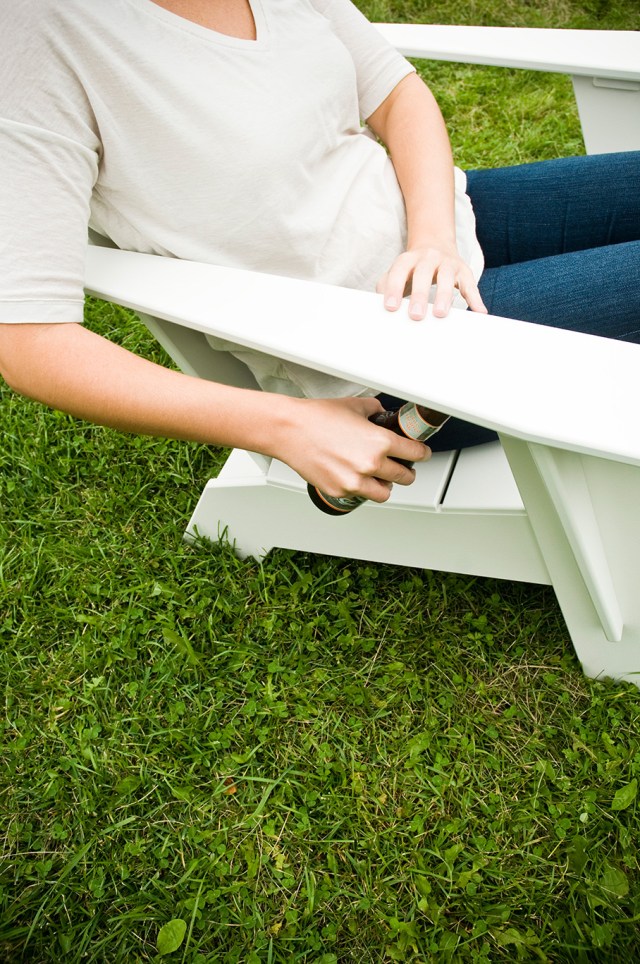The Redemption Of The Recycled
By Caris Avendaño Cruz
Making miracles out of milk jugs: Loll Designs
There is a regular need for milk—a staple source of calcium—but for milk jugs, not so much. When the contents are exhausted, these plastic containers lie around, stacked together like bulky bricks, often a constant source for comical mishaps. Not everyone can DIY their way into discarding them, but Duluth, Minnesota-based company Loll Designs finds a way to breathe new life, and a touch of flair, into this unwanted rubbish.
The problem with milk jugs and plastic

It takes an effort to discard plastic, especially those associated with food. While the versatile material is free from rusting and corrosion, it’s not exactly free from mould growth—something that keeps it from being recyclable. It’s necessary to thoroughly clean milk jug interiors, as traces of dairy will affect an entire load, making it unfit for recycling machines. When these plastics are not properly saved, they would most likely end up in the landfill, if not the oceans.
That’s bad news. Plastics take their time to biodegrade, a long stretch of centuries before they completely vanish. Regular water bottles, on an average, biodegrades in 450 years. Small plastic straws, in 200 years. That’s four or more generations!
With the density of plastic milk jugs, experts look forward to at least a thousand years before it thoroughly decomposes into the soil, mixing in all the toxins that come with its artificial construction.
Power-packed plastics
Milk jugs are made from high-density polyethylene, or HDPE. This type of plastic is commonly marked by the number 2 enclosed in the recycle sign. One can find this resin identification code stamped at the bottom or the side of the container. Considered thermoplastics, HDPEs can withstand varying temperatures, a perfect vessel for common drinks consumers enjoy on a daily.
HDPEs have been around for decades. Its first commercial appearance was in the 1950s, the era of World War II, when the British found it a perfect insulation material for radar cables and pipes. Karl Ziegler, among its originators, was awarded the Nobel Prize for Chemistry several years after.
These plastics are not exactly a threat to the human race. HDPEs make a great replacement from heavier materials, and a less-expensive choice from sourcing out wood, metal and alloy. They are impact resistant, pliable as they are durable, and can be shaped in various forms. They make a great packaging substitute; instead of the fragile glass, this lightweight container can be filled with liters of fresh milk, easily carried out of the store. With the absence of salt, corrosion and rust, HDPEs are one’s better, cheaper replacements to thinning natural resources.
Many frown at the use of plastics, but this material promises longevity and strength. Perhaps the real problem lies in its oversupply, and the way humans recklessly discard them.
An intelligent metamorphosis

Images © Loll Designs
Greg Benson only toyed with the idea of an Adirondack chair made from discarded jugs, a joke that brought to life Loll Designs. This experiment was nothing new; Benson was known to wear his entrepreneurial hat while looking for ways to reduce waste. One of his first ideas was TrueRide, a company that designs and builds custom skate ramps from scrap materials, which Benson has to part ways in 2007 to focus on his next venture.
The term that spurred the new brand was nothing idealistic. Loll Designs, in fact, was helmed from the world lollygagger, which Merriam-Webster defines as “dawdle[r], [one who] fools around”. But to Benson, who stays grounded to his laidback roots, this humorous word is a term made for people who imbibe in the work hard, play hard, rest hard attitude, and those who “appreciate the outdoors” in terms of quality and experience.
The goal was simple: pick up single-used jugs, whether their previous life contained milk or detergent, assemble them into hundreds, and make good designs for life and living. Loll Designs source the recycled plastics from two US-based companies trusted for their quality. Then, the sheets are processed in the company’s warehouse perched in an industrial area in West Duluth.
At the heart of Loll Design’s production are 5 CNC (Computer Numerical Control) machines that aids in cutting specific shapes that will be assembled into chic, contemporary chairs. Business Development Hattie Maruska describes them as “giant cookie cutters” that trace the shapes out of the sheet with as little waste as possible.
There is a sense of grounded inventiveness to Loll Designs. Leftover plastic shavings are collected and sold for reuse. Product packaging is less extravagant, but the real joy is in Loll Designs’ collection. For example, their Adirondacks are smart, solid-toned recliners, made with the option to switch into rocking legs, and includes a pun: there’s a bottle opener integrated on the armrest, making it the perfect seat for those joyful drinking nights with friends.

Images © Loll Designs
The Lollygagger Living range received a warm welcome in its 2016 Clerkenwell Design Week debut, showcasing a plethora of outdoor chairs, tables and planters, all in vivid colours. Everything is crafted from nothing else but discarded milk and detergent jugs. Stark black and blue benches in modern designs are a visual treat; the white and orange versions add a nice pop of colour to one’s outdoor deck or patio. Here is where good design intelligently utilises post-industrial materials, a tick in many boxes, including aesthetics, durability and eco-friendly features.
HDPE plastics can be used and reused. Not surprisingly, the HDPE furniture from Loll Designs is all recyclable. This is where many possibilities open: an endless cycle of recycling and recreating, without doing harm to the environment, or taking more from its already-depleting resources.
Loll Designs: Leaps and Bounds
The 2006-founded company wasn’t the first in line for the recycling redemption, but its green initiatives became its many medals. Among its many initiatives is “Clean Yer Creek,” an annual creak clean-up where Loll and other local businesses gather together to preserve its local watershed. 1% for the Planet is a global initiative where big brands pledge to give at least 1% of their gross to environmental organizations. Loll Designs has been a member since 2008.

Images © Loll Designs
Loll Designs won the Green Dot Award for their No. 9 Collection, and Good Design Awards for their Cabrio and Emmet Collection. Their Adirondack series, the company’s firstborn, was given the Honor Award by the American Society of Landscape Architects. Since the brand’s inception, more than 50,000 discarded milk jugs have been turned into stylish furniture, most of them are now used in many public spaces, including Toronto’s Sugar Beach and a public library in Seattle.

Images © Loll Designs
Recycling plastic is not easy or cheap. But this greener option will prove to be the better choice for future-forward consumers who anticipate the needs of the coming generation. With Loll Designs, discarded milk jugs become less of a threat, more of use—a visually pleasing one at that.




Leave a comment